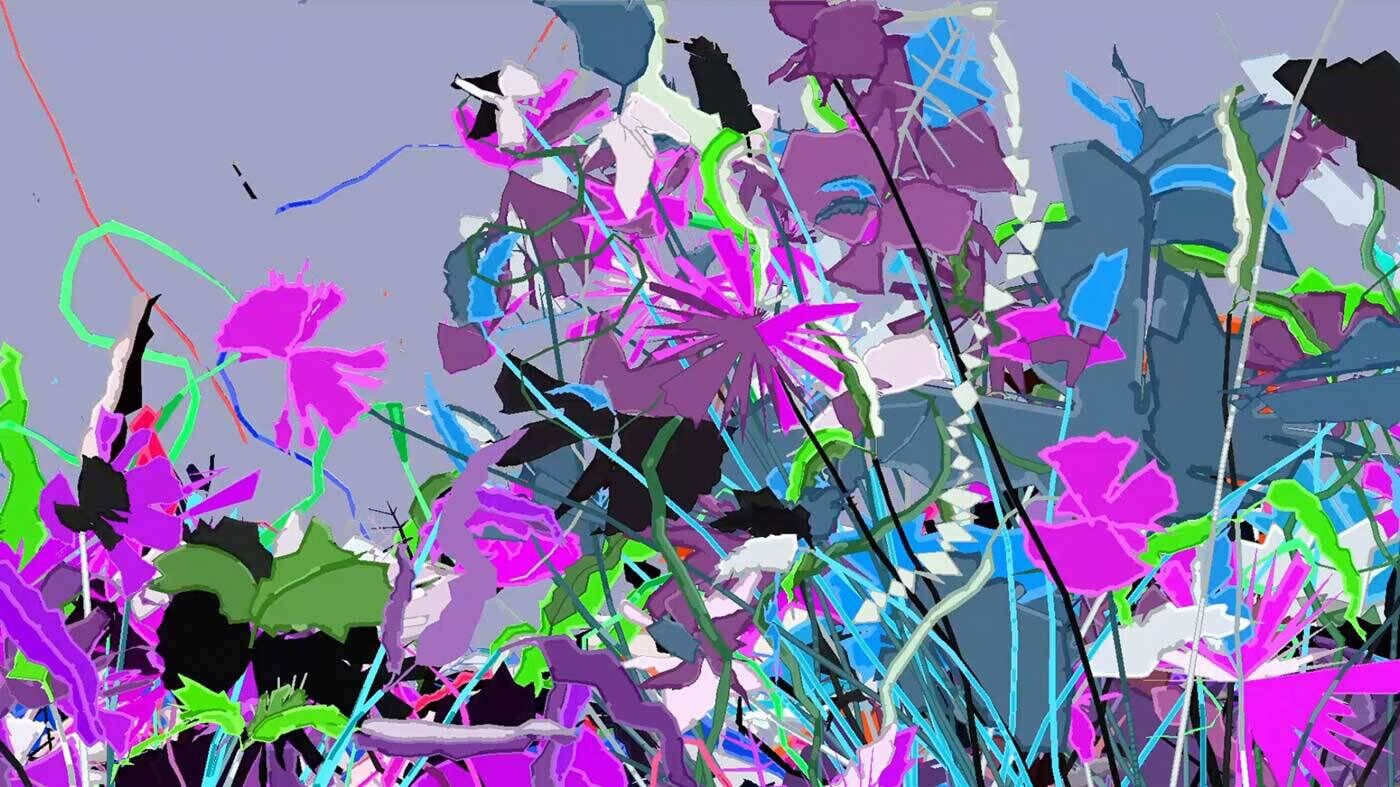Harold Cohen: AARON | Art & Artists
Feb 3–May 19, 2024
Harold Cohen: AARON | Art & Artists
Flora and Figures
3
Before AARON executed fully dimensional figures, from about 1989 onward, the program created compositions of rocks and flora with abstract humanlike figures. These works reveal the connections between these early figurative drawings set in nature from the late 1980s and software from the 2000s that explored junglelike environments of layered foliage. AARON’s shift from abstraction to figuration in the mid- to late 1980s marked both a technical and conceptual change. To make recognizable figures in an environment, the software had to have a different, more concrete, knowledge of the world. The painting Untitled, Bathers Series (1986) alludes to French Post- Impressionist painter Paul Cézanne’s early twentieth-century works The Bathers and The Large Bathers. Adopting Cézanne’s strategies, Cohen’s code strives to have AARON create essential structures for representation and chromatically harmonizes the trees and human skin. The overlapping foliage of the earlier works would evolve into the complex composition of plant life shown in the projected software from 2007. AARON has no stored descriptions of particular flora but generates plants from rules about their size, branching levels, and patterns of leaf formation.

